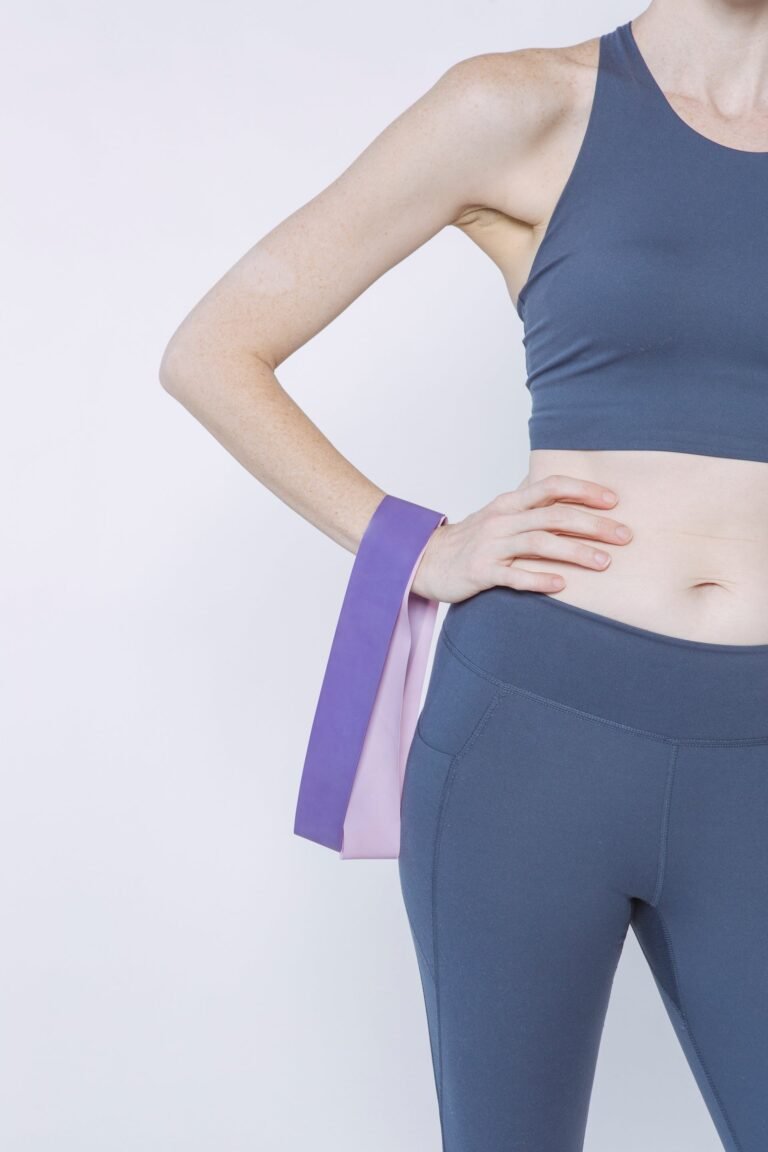Introduction
What are resistance bands?
Resistance bands are versatile fitness tools that can be used for a variety of exercises. They are elastic bands that come in different levels of resistance, making them suitable for beginners and advanced users alike. You can find a wide range of resistance bands on Amazon that cater to different fitness goals and preferences. These bands are portable and easy to use, making them a convenient option for home workouts or on-the-go fitness routines. Whether you want to tone your core, build strength, or improve flexibility, resistance bands can be a valuable addition to your fitness routine.
Why use resistance bands for core exercises?
Resistance bands are a versatile and effective tool for core exercises. They provide constant tension throughout the movement, targeting the core muscles from different angles. Unlike traditional exercises, resistance bands allow for greater range of motion and increased muscle activation. They are also portable and can be used anywhere, making them a convenient option for those who don’t have access to a gym. Incorporating resistance bands into your core workout routine can help you achieve a sculpted core and improve overall strength and stability.
Safety tips for using resistance bands
When using resistance bands for core exercises, it’s important to follow some safety tips to prevent injuries. One of the key safety tips is to ensure controlled movements throughout the exercises. This means maintaining proper form and avoiding jerky or sudden movements that can strain the muscles. By focusing on controlled movements, you can effectively target and engage your core muscles while minimizing the risk of injury. Remember to start with lighter resistance bands and gradually increase the intensity as you build strength and confidence. It’s also a good idea to consult with a fitness professional to learn the correct techniques and avoid any potential mistakes.
Exercise 1: Russian Twists
How to perform Russian twists with resistance bands
To perform Russian twists with resistance bands, start by sitting on the floor with your legs extended in front of you. Wrap the resistance band around your feet and hold the ends with both hands. Lean back slightly, engaging your core muscles. Twist your torso to the right, bringing your hands towards the floor on your right side. Then twist to the left, bringing your hands towards the floor on your left side. Repeat this twisting motion for the desired number of repetitions. Russian twists are a great exercise for strengthening your core and improving your rotational stability. They target the obliques, rectus abdominis, and lower back muscles. Adding resistance bands to this exercise can increase the challenge and help you build even more strength in your core. If you’re looking for a place to purchase resistance bands, check out the Christie Wellness Hub for a wide selection of high-quality bands.
Benefits of Russian twists for core strength
Russian twists with resistance bands are a fantastic exercise for building core strength. They target the oblique muscles, which are responsible for rotational movements. By using resistance bands, you can add an extra challenge to the exercise and increase the intensity of your workout. The bands provide constant tension throughout the movement, engaging your core muscles even more. Additionally, resistance bands allow you to perform core exercises without the need for bulky equipment or machines. This makes them a convenient and versatile option for anyone looking to sculpt their core.
Variations of Russian twists with resistance bands
Now that you know how to perform Russian twists with resistance bands, let’s explore some variations that can add an extra challenge to your core workout. These variations can help target different muscles in your core and keep your workout routine interesting. Here are a few variations you can try:
| Variation | Description |
|---|---|
| Double Band Russian Twists | Use two resistance bands to increase the resistance and intensity of the exercise. This will engage your core muscles even more. |
| Standing Russian Twists | Stand upright and hold the resistance band with both hands. Twist your torso from side to side, engaging your core and oblique muscles. |
| Weighted Russian Twists | Hold a dumbbell or a weighted plate while performing the Russian twists. This will add an extra challenge to your core workout. |
By incorporating these variations into your routine, you can continue to challenge and strengthen your core muscles. Remember to choose a resistance band that suits your fitness level and always prioritize safety while using fitness gear.
Exercise 2: Bicycle Crunches
How to do bicycle crunches using resistance bands
Bicycle crunches are a great exercise for targeting the core muscles. To perform bicycle crunches using resistance bands, follow these steps:
- Lie on your back with your knees bent and feet flat on the floor.
- Place the resistance band around your feet and hold the handles in your hands.
- Lift your head, neck, and shoulders off the floor, engaging your core.
- Bring your right elbow towards your left knee while straightening your right leg.
- Repeat on the other side, bringing your left elbow towards your right knee.
Adding resistance bands to bicycle crunches increases the intensity of the exercise, making it more challenging for your core muscles. The bands provide constant tension throughout the movement, forcing your muscles to work harder. This is especially beneficial for those who prefer home workouts and want to make the most out of their exercises. By incorporating resistance bands into your bicycle crunches, you can sculpt and strengthen your core effectively.
Engaging the core muscles during bicycle crunches
During bicycle crunches, it’s important to engage the core muscles to maximize the effectiveness of the exercise. Engaging the core means actively contracting and tightening the abdominal muscles throughout the movement. This helps to strengthen and tone the muscles in the core, including the rectus abdominis, obliques, and transverse abdominis. To engage the core during bicycle crunches, focus on pulling the belly button in towards the spine and maintaining a strong and stable core throughout the exercise. By using resistance bands, you can add an extra challenge to the exercise and target the core muscles even more. The resistance provided by the bands forces the muscles to work harder, leading to increased strength and definition. Using resistance bands for bicycle crunches is a great way to take your core workout to the next level.
Adding resistance for an extra challenge
If you’re looking to take your bicycle crunches to the next level, adding resistance can provide an extra challenge and help you build even more core strength. Using resistance bands during bicycle crunches engages your muscles in a different way, making the exercise more intense and effective. You can wrap the resistance band around your feet or hold it with your hands to create resistance as you perform the crunches. This added resistance not only targets your abs but also works your obliques and hip flexors. It’s a great option for beginners who want to progress their core workout and see faster results.
Exercise 3: Planks
Performing plank with leg lifts using resistance bands
Plank with leg lifts is an excellent exercise for strengthening the core muscles. By adding resistance bands, you can make this exercise even more challenging and effective. To perform plank with leg lifts using resistance bands, start in a high plank position with the resistance band looped around your ankles. Engage your core and lift one leg off the ground while maintaining a straight line from your head to your heels. Lower the leg back down and repeat on the other side. Resistance bands provide constant tension throughout the movement, forcing your core muscles to work harder. This exercise targets not only the abs but also the glutes and hip flexors. If you want to increase the intensity, you can try using heavier weights of resistance bands. Remember to maintain proper form and avoid sagging or arching your back. By incorporating resistance bands into your plank with leg lifts routine, you can take your core workout to the next level.
Benefits of adding resistance bands to plank exercises
Adding resistance bands to plank exercises can greatly enhance the effectiveness of this core-strengthening move. The resistance bands provide an extra challenge by adding tension to the muscles, forcing them to work harder. This helps to improve overall core strength and stability. Additionally, using resistance bands during plank exercises engages more muscles, including the shoulders, arms, and back, making it a full-body workout. By incorporating resistance bands into your plank routine, you can take your core training to the next level and achieve a sculpted midsection.
Tips for maintaining proper form during plank with leg lifts
When it comes to maintaining proper form during plank with leg lifts, there are a few key tips to keep in mind. First, make sure to engage your core muscles throughout the exercise. This will help you maintain stability and prevent any unnecessary strain on your lower back. Second, focus on keeping your hips in line with your shoulders and ankles. Avoid letting your hips sag or lift too high, as this can put added stress on your spine. Finally, remember to breathe! It’s easy to hold your breath during challenging workouts, but deep, controlled breathing will help you maintain focus and stay in control. By following these tips, you’ll be able to perform plank with leg lifts safely and effectively.
Equipment
If you are looking to build these exercises into your routines, take a look at the options shown for purchases under $50 or even building your own at home gym for over $100





